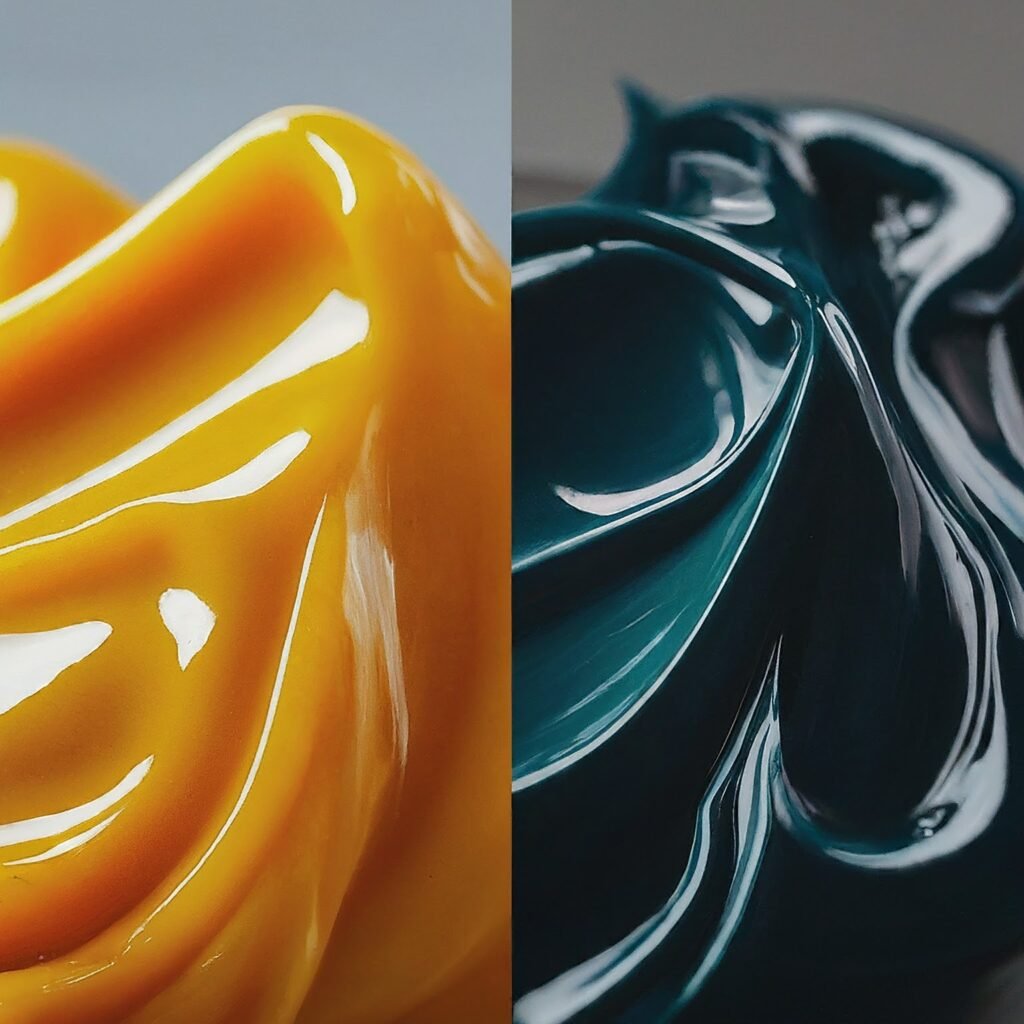Introduction to Mithila Paints
The characteristic designs of Mithila Paints are distinguished by geometric patterns, vibrant colors, and mythological themes. Artists employ natural dyes and pigments, formed from locally available materials such as plants, charcoal, and minerals. The motifs often depict nature—such as the sun, moon, plants, animals, and divine figures. This art form serves as a medium to visualize and celebrate nature, spirituality, and cultural stories, thus playing a significant role in the collective cultural identity of the Mithila region.
Traditionally, Mithila Paints graced the walls of village homes, creating an immersive expression of the community’s devotional and social life. These artworks are more than mere decor; they symbolize protection, prosperity, and sacredness. They represent a visual language through which stories are told and values perpetuated. Over time, Mithila Paints have transcended local boundaries, finding appreciation in global art markets and institutions, while still retaining their original significance and cultural ethos.
In essence, Mithila Paints epitomize a rich cultural heritage, embodying the confluence of artistry, history, and cultural narratives. Their evolution continues to be shaped by both traditional practices and modern influences, ensuring their relevance and vitality in contemporary times.
Understanding Resin Technology
Resin technology encompasses a broad spectrum of synthetic substances that are primarily valued for their versatile chemical properties and extensive industrial applications. Resins, which are solid or highly viscous materials, typically originate from plant exudates or are synthetically produced through polymerization. One of the defining features of resins is their ability to transform from a liquid or semi-liquid state into a solid form, which makes them a crucial component in various manufacturing processes.
The chemical properties of resin, such as viscosity, hardness, and durability, can be vastly different depending on the type of resin. These materials are categorized into several types including epoxy, polyester, phenolic, and polyurethane resins, each with distinct characteristics and specific uses. For instance, epoxy resins are renowned for their exceptional adhesive qualities and resistance to environmental degradation, making them ideal for applications in aerospace, automotive, and construction industries. Polyester resins, on the other hand, are commonly used in the production of fiberglass and coatings due to their cost-effectiveness and mechanical strength.
In addition to their technical attributes, resins are often selected for manufacturing processes based on their ability to enhance durability, provide water resistance, and offer elasticity. These properties are crucial in industries ranging from electronics, where resins are used for encapsulating and insulating components, to art and design, where they serve as binding agents or protective coatings in artworks. The role of resin technology extends into pharmaceuticals, food packaging, and even advanced textile production, showcasing its versatility.
This understanding of resin technology is fundamental when considering its transformative impact on the production of Mithila Paints. These paints require materials that can ensure longevity, vibrant color retention, and adaptability to various substrates. Hence, the integration of advanced resin formulations can significantly elevate the quality and performance of Mithila Paints, ensuring they meet rigorous artistic and industrial standards.
Historically, the creation of Mithila Paints, or Madhubani art, has been deeply rooted in tradition, with artisans employing methods passed down through generations. Natural pigments sourced from plants, minerals, and other organic materials formed the basis of the paint. A predominant use of turmeric, sandalwood, indigo, and ochre facilitated a rich, earthy palette. These pigments were mixed with organic binders, such as gum arabic, rice paste, or milk, to create the paint medium.
Artisans meticulously prepared these materials; for instance, black pigment was derived by burning mustard oil lamps, while yellow could be extracted from flowers like marigold or turmeric powder. The pigments were then ground into a fine powder and blended carefully to achieve the desired consistency and hue.
The application of these traditional paints involved intricate and labor-intensive techniques. Typically, the painting surface was bamboo sticks or brushes crafted from plant fibers, and natural dyes were often applied on handmade paper, fabric, or walls coated with a layer of cow dung and mud to ensure durability. The art was not merely decorative but carried significant cultural and religious symbolism, often depicting mythological and nature-inspired themes.
Despite their historical richness, these methods faced several challenges. Durability was a persistent issue; natural pigments were prone to fading, especially with exposure to sunlight and moisture. Color fastness was another concern, as the organic binders had limited capability to preserve the vibrancy of colors over time. Furthermore, the reliance on natural resources sometimes led to environmental strains, as harvesting large quantities of plants or minerals for pigment creation was not always sustainable.
The intricate and time-consuming process meant that scaling up production to meet broader demands was difficult. Artisans also struggled with consistency in color and texture, which could vary significantly depending on the quality of raw materials and their preparation process. These limitations underscored the need for innovative solutions to preserve the essence of Mithila Paints while addressing modern-day challenges.
Resin technology in the manufacturing of Mithila Paints represents a unique convergence of tradition and innovation. The initial considerations for integrating resin technology were rooted deeply in the need to preserve the authenticity of traditional Mithila art while also enhancing its durability and appeal in modern markets. Extensive research was pivotal in this endeavor, ensuring that the resin materials used would not compromise the cultural integrity of the artwork.

Historical Context and Initial Considerations
Mithila Paints, known for their intricate designs and vibrant colors, have traditionally relied on natural dyes and pigments. However, these materials, while beautiful, lacked the robustness required for global commercialization. Therefore, the primary consideration was to identify suitable resin compounds that could be harmonized with traditional pigments without diluting their essential attributes. Scholars and artists undertook collaborative research, focusing on the physical and chemical properties of resin that could align with the eco-friendly ethos of traditional Mithila Paints.
Research and Trials
The research phase involved both laboratory tests and field trials. These endeavors sought to assess the stability, adhesion, and long-term effects of resin coatings on Mithila Paint surfaces. A rigorous process was set in motion, where various resin types, such as epoxy and acrylic resins, were experimented with. The trials were not merely scientific but included the valuable input of seasoned Mithila painters who monitored how resin interacted with their traditional tools and techniques. Their feedback was crucial in iterating and fine-tuning the resin formulations to ensure they met the dual objectives of tradition and innovation.

Synergy and Results
The outcome of these efforts was a cohesive methodology that seamlessly integrated resin technology into the Mithila Paints manufacturing process. The new resin-enhanced paints proved to be significantly more durable, resistant to environmental wear-and-tear, and vibrant over time. This technological upgrade did not merely preserve the traditional aesthetics but also opened new avenues for Mithila Paints to thrive in contemporary art markets globally. Thus, the intersection of tradition and innovation in Mithila Paints, facilitated by resin technology, epitomizes a successful blend of cultural preservation and modern advancement.
Advantages of Using Resin in Mithila Paints
The advent of resin technology has significantly revolutionized the manufacturing and application of Mithila paints, paving the way for numerous advantages that were previously unachievable with traditional mediums. One of the primary benefits is the enhanced durability that resin-based paints offer. Unlike conventional paints, resin provides a robust and resilient coating that withstands wear and tear, ensuring that the artwork remains intact for extended periods.
Another notable advantage is the remarkable improvement in color vibrancy. Resin allows for a richer and more vivid pigment display, which brings out the intricate details and elaborate patterns typical of Mithila art. The high gloss finish afforded by resin further amplifies the colors, making the art visually striking.
Resin technology also significantly improves resistance to environmental elements. Works created with resin-infused paints exhibit superior protection against moisture, UV rays, and temperature fluctuations. This resistance mitigates common issues such as fading, discoloration, and bleaching, thereby preserving the original appearance of the artwork for years to come.
Longevity is another critical benefit of incorporating resin into Mithila paints. The enhanced bonding properties of resin help to prevent cracking and peeling of the paint layers, which historically has been a prevalent issue in traditional paint applications. This preservation of structural integrity means that the artwork can withstand various environmental stressors without degrading, thus ensuring the longevity of the art.
In addition to these benefits, resin’s versatile properties enable artists to explore a broader spectrum of creative possibilities. The adaptable nature of resin allows for a range of finishes, from matte to high-gloss, and can be used on multiple substrates, providing greater flexibility in artistic expression.
By addressing the limitations of traditional paints and introducing these transformative benefits, resin technology undeniably enhances the quality, durability, and visual appeal of Mithila paintings, marking a significant advancement in the preservation and evolution of this historic art form.
Environmental and Economic Impact
The adoption of resin technology in Mithila Paints manufacturing holds significant environmental and economic implications. From a sustainability perspective, resin materials can provide a green alternative to traditional painting substances. For instance, synthetic resins, when derived from bio-based sources, can drastically reduce the carbon footprint associated with the production of conventional pigments and binders. These bio-resins not only decrease reliance on fossil fuels but also promote the use of renewable resources, thereby aligning with global efforts to mitigate climate change.
However, the environmental concerns associated with resin technology must also be considered. While bio-resins are largely eco-friendly, the synthesis of some synthetic resins involves harmful chemicals and energy-intensive processes. It is crucial to ensure that the manufacturing processes adhere to stringent environmental regulations to minimize any adverse environmental impact. Furthermore, proper disposal and recycling of waste materials derived from resin-based paints are imperative to prevent ecological contamination.
On the economic front, resin technology can be a catalyst for growth in the Mithila Paints sector. The integration of advanced resin techniques can enhance the quality and durability of the paints, making them more appealing in both domestic and international markets. The superior adhesion, longevity, and vibrant finish provided by resin-based paints can significantly elevate their marketability, thereby opening up new revenue streams for local manufacturers.
Additionally, the advent of resin technology in Mithila Paints can spur economic development within the region by creating new job opportunities. The production, research, and marketing of these advanced paints necessitate a skilled workforce, which in turn can lead to job creation and economic upliftment. Small and medium-sized enterprises (SMEs) involved in the supply chain of resin materials and paint production can particularly benefit from this technological shift, enhancing overall economic resilience.
In conclusion, while the environmental advantages and concerns of resin technology must be balanced, its economic benefits are evidently promising. Through sustainable practices and effective regulatory measures, the integration of resin technology in Mithila Paints manufacturing can herald a new era of environmentally-conscious and economically vibrant production.
Case Studies: Success Stories
Resin technology has not only been a theoretical augmentation in the Mithila Paints manufacturing industry but has also produced tangible, transformative results for artists and manufacturers. This section highlights several success stories, providing detailed insights into how resin technology has revolutionized Mithila Paints.
A prominent example is the journey of Meera Devi, a well-known Mithila artist, who started incorporating resin technology into her artistry two years ago. According to Meera, the addition of resin has significantly enhanced the durability and aesthetic value of her paintings. With its capability to create vibrant, glossy finishes, resin has allowed her to produce artworks that attract higher market prices. Meera shared in an interview, “Before using resin, my paintings were beautiful but lacked the longevity and visual impact that resin brings. Today, not only has my income doubled, but my confidence and scope of creativity have also expanded.”
Similarly, a traditional Mithila Paint manufacturing unit, Mithila Creations Pvt. Ltd., experienced a remarkable transformation after integrating resin technology into their production processes. The CEO, Rajesh Kumar, emphasized that resin has brought about a significant enhancement in product quality. Resin’s versatile applications have enabled his team to venture into new markets, including high-end home decor and customized art pieces. “The texture and finish that resin imparts are unparalleled. It has opened up avenues that we had never considered before, including online international sales,” Rajesh noted in a testimonial.
Another remarkable story comes from the artist collective, Kala Sangam, that comprises 15 artists from Madhubani, Bihar. With support from a local NGO, they received training in resin usage, which dramatically improved their output quality. “Our paintings were always appreciated for their intricate designs, but customers started recognizing the value of our work more once we began using resin. The resistance to environmental wear and tear made our pieces more desirable,” said Priya Kumari, a senior member of Kala Sangam.
These case studies serve as compelling proof of the transformative impact that resin technology can have on Mithila Paints manufacturing. By showcasing the real-world benefits and successes experienced by artists and manufacturers, those considering the transition can be more confident in adopting this innovative technology.

Future Prospects and Innovations
The intersection of technology and tradition in the domain of Mithila paints is poised for significant advancements. As resin technology continues to evolve, its future applications in traditional art forms appear promising. Ongoing research in materials science is likely to yield new varieties of resin that can be tailored to specific requirements of traditional art, such as enhanced elasticity, durability, and eco-friendliness.
One of the exciting prospects is the potential for developing biodegradable resin alternatives. As the world becomes increasingly conscientious about environmental sustainability, researchers are exploring options that could replace conventional resins with organic, nature-friendly variants. This shift would not only preserve the aesthetic and functional benefits of resin in Mithila paintings but also align the practice with global sustainability goals.
Additionally, advancements in nanotechnology could play a pivotal role in the refinement of resin applications. Nano-enhanced resins may offer improved adhesion properties and resistance to environmental factors like UV radiation and humidity. Such developments would significantly extend the longevity of Mithila artworks, ensuring that these cultural artifacts can be preserved without compromising their inherent beauty and vibrancy.
Beyond Mithila paints, the successful fusion of resin technology with traditional art practices opens up possibilities across other art forms. Techniques that leverage resin’s versatility could be applied to textiles, pottery, and even sculpture, widening the scope of traditional art enhanced by contemporary innovations. For instance, resin-coated fabrics could gain unique textures and greater durability, while pottery glazed with resin might achieve unprecedented levels of intricacy and finish.
Considering these developments, artists and manufacturers are encouraged to stay abreast of technological advancements. Collaborative efforts between scientists and artisans can drive the innovation necessary to sustain the relevance of traditional art in modern times. This synergy of technology and tradition is likely to yield a new era where the age-old art forms continue to thrive, enriched by the advancements of modern science.


